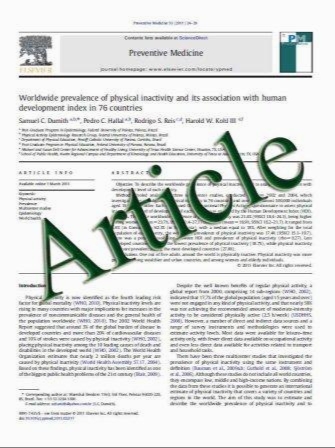Arzoxifene versus raloxifene: effect on bone and safety parameters in postmenopausal women with osteoporosis
- نوع فایل : کتاب
- زبان : انگلیسی
- مؤلف : D. L. Kendler & S. Palacios & D. A. Cox & J. Stock & J. Alam & S. A. Dowsett & J. Zanchetta
- چاپ و سال / کشور: 2011
Description
Summary Arzoxifene increased bone mineral density and decreased bone turnover to a significantly greater extent than raloxifene. The hot flush incidence was lower with arzoxifene than raloxifene. Introduction To assess the effect of arzoxifene versus raloxifene on change in lumbar spine (LS) bone mineral density (BMD) in postmenopausal women with osteoporosis. Methods In this 12-month study (NEXT trial), participants were randomly assigned to arzoxifene 20 mg/day (N=158) or raloxifene 60 mg/day (N=162). All received daily calcium and vitamin D. Change in LS BMD was assessed by DXA. Secondary objectives included assessment of femoral neck (FN) and total hip BMD, serum bone turnover markers, and safety. Results Treatment groups were similar at baseline (mean age 63 years, mean LS BMD T-score .2.9). At 12 months, the increase in LS BMD with arzoxifene was greater than with raloxifene (+2.75% vs. +1.66%), as was FN and total hip BMD (P<0.05). For LS and FN, this effect was also evident at 6 months. Arzoxifene reduced bone turnover to a greater extent than raloxifene at 3, 6, and 12 months (P<0.05). The proportion of women reporting .1 adverse event did not differ between treatment groups, nor did vaginal bleeding. No cases of endometrial polyps, hyperplasia, or cancer were reported. Nasopharyngitis and bronchitis were reported more frequently with arzoxifene versus raloxifene (10.1% vs. 2.5%, and 5.1% vs. 0%, respectively) and new/worsening hot flushes were reported less frequently with arzoxifene (7.0% vs. 16.7%) (P<0.05). Conclusions Arzoxifene increased BMD and suppressed bone turnover to a greater extent than raloxifene and resulted in a lower incidence of new/worsening hot flushes. Based on subsequent findings from a fracture outcome study, this difference did not translate into improved fracture efficacy.
Osteoporos Int DOI 10.1007/s00198-011-1587-0 Received: 1 December 2010 / Accepted: 26 January 2011


